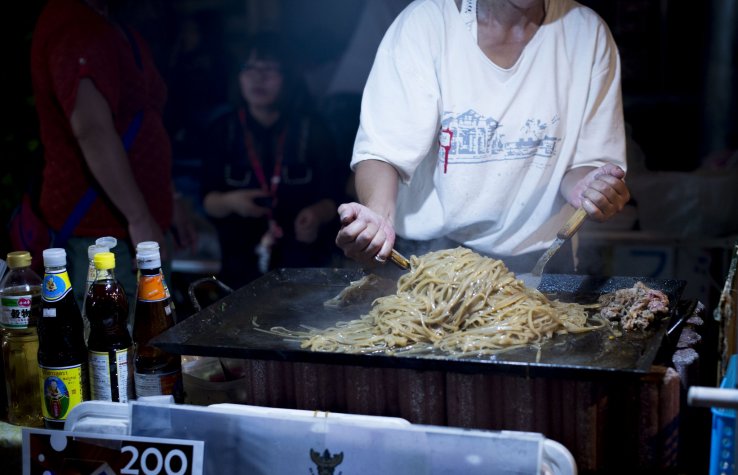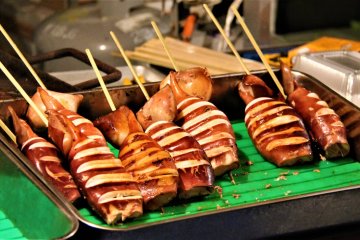My first taste of Japanese street food came through a little taiyaki store in Setagaya in south-west Tokyo. After queuing up like everyone else, I picked up a couple of these curiously fish-shaped bites of battered cake, and popped one in my mouth. Wow. Being a savoury man, I never expected the sweet anko red-bean paste making up the filling to be so good. But it was and thus my introduction to street food in Japan.
Japanese street food culture is sometimes considered a lot less boisterous than those of other countries in the region. I'm not so sure about that though. Local shops abound and yatai street stalls are rarely a permanent fixture, usually appearing en masse come festival time. Given that festivals are a dime a dozen in Japan, perhaps permanence doesn't matter if they are always there...

Street stall foods like ikayaki skewered squid, yaki soba noodles and yaki tomorokoshi grilled corn cobs are extremely popular at these festivals. A perennial treat during the humid summer months is kakigori, shaved ice flavoured with syrup, while in winter, a piping hot yakiimo grilled sweet potato can be a godsend.

More established locales include Shinjuku's blue-collar Omoide Yokocho whose vendors have been serving yakitori chicken skewers and its variations since the 1940s. Kyoto's Nishiki Ichiba has been in action in some form since the 1300s. With a history that long, they get the right to serve sashimi, often considered a high-end cuisine, as a street snack. Osaka's Dotonbori is the centre of the universe for street food in Osaka, lead by the insanely popular takoyaki balls of battered diced octopus.
Wherever you go, street food in Japan is a delight. Trying it at a local corner store, a street stall at the nearest festival or at one of Japan's historical bastions of cuisine consumption, each bite is another taste of culinary Japan.









